How to Use Advanced Analytics to Produce Actionable Outcomes
Energy operators today face increasing competition and price pressure, and are seeking new ways to be more efficient.
Traditionally, many operators have implemented standard monitoring solutions, which focused on alerting engineers and operators about issues on their assets. This approach requires a manual diagnostic process to distinguish true / false alarms, determine their meaning and priority, and to decide on corrective actions. It also requires significant time from engineers and operators, which results in a reactive, inefficient, and costly process.

In this article, we’ll make the case for how using advanced analytics and automation can significantly improve both internal productivity and asset performance.
The challenge of standard monitoring: An example
Let’s look at the process involved with the standard monitoring approach.
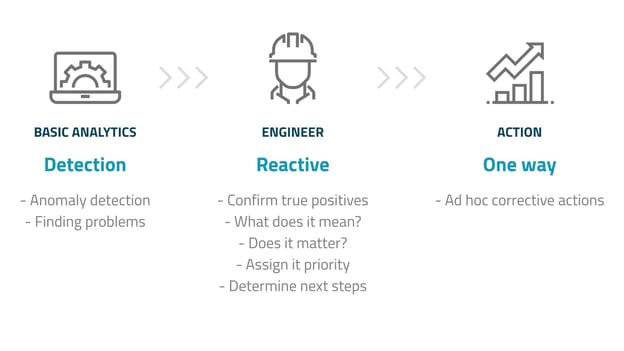
In this approach, analytics are primarily used to flag issues for follow up by engineers whose time is focused on validating, confirming, and assigning priorities to things which have triggered. The results of the analytics are non-actionable and they require significant time from knowledgeable engineers to put them into action. There is little use of automation and the engineers’ knowledge is only put to use when manually applied on a case by case basis, after the fact.
Beyond Monitoring: A better approach using Actionable Outcomes
A better approach is to use analytics to produce actionable outcomes, which are tactical decisions that have meaning to the organization and can be acted upon with minimal manual diagnostics.
Let’s take a look at how this process works:
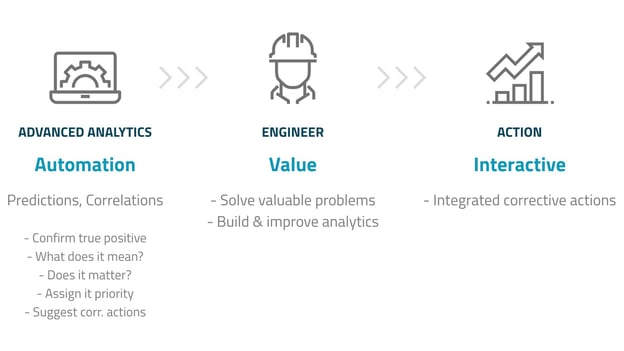
In this approach, we use advanced analytics which leverage engineers’ knowledge to assign meaning, priorities, and even automate corrective actions. We create actionable outcomes that automate significant portions of the process, resulting in substantial improvements.
The engineers can now focus on value-added activities such as working on the most critical issues while building and improving analytics using their knowledge. We can even implement automated corrective actions that incorporate feedback from field technicians, so we are continually improving asset performance.
Overall, the benefits of this approach are: 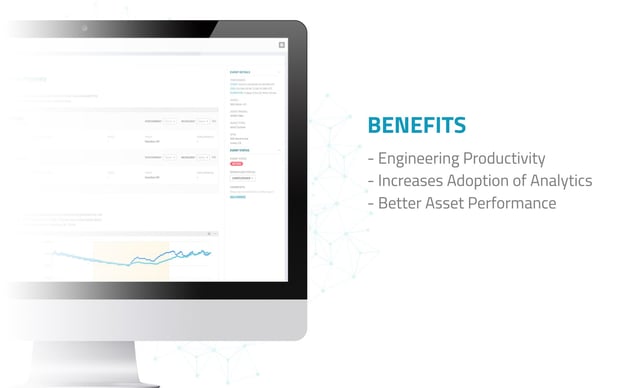
Actionable outcomes represent a shift towards automation. This places an organization’s knowledge into action, reducing the use of manual diagnostics while letting engineers focus only on the most important issues.
This results in significant gains in internal productivity, results in analytics which are used by the organization, and in automated corrective actions.
Actionable outcome example
Using our example of temperature, instead of a simple threshold or group mean comparison, an analytic driving an actional outcome might do the following:
The output of this analytic is actionable - we have incorporated an engineer’s diagnostic process - what he or she might do when presented with a temperature anomaly, we have assigned it a priority, and even a corrective action. Therefore, we’re achieving our goal of creating tactical outcomes that have meaning to the organization and can be acted upon with minimal further manual diagnostics.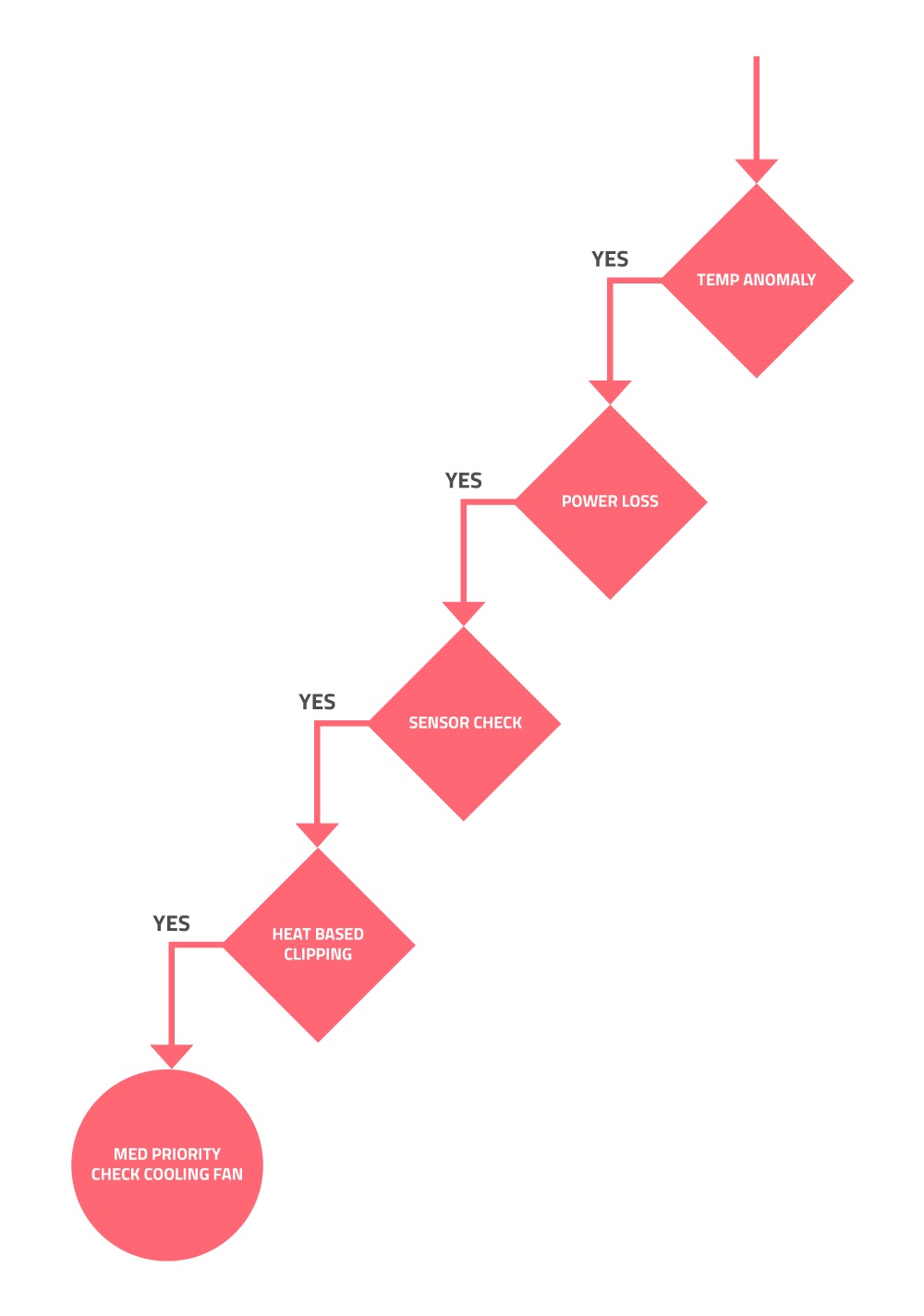
How to put this all together
There are three key methods to creating actionable insights.

#1 Work backwards from what matters.
By working backwards from what matters to your organization, and incorporating that into your analytics, you can significantly increase adoption. In many cases what this means is adding a value based trigger to your analytics. The metrics can vary by organization and analytic type, but typically fall into a few categories:
- Lost energy output
- Mechanical problems that reach a threshold of probability leading to failure
- Other issues considered actionable
By adding these value based triggers into your analytics, the result of analytics are actions which by definition your organization cares about, not just alerts that may not be important.
#2 Add human context
Engineers, asset managers, and performance analysts are very good at diagnosing the results of analytics. Their knowledge and thought process is critical to applying analytics effectively. By combining their diagnostic process with analytics whenever possible in an automated way, you can create significantly more valuable analytic results.
For example, an engineer's process to diagnose a temperature anomaly might be to check the ambient temperature, the load state of the asset, and how it compares to neighboring assets before deciding how to classify the alert and what action to take.
Insights not Alerts
We call this combination of an analytic with an engineer’s diagnostic process an Insight. An Insight goes far beyond a simple alert and allows you to assign meaning, create priorities, and ultimately create automated recommendations.
At NarrativeWave, we enable this process in Insight Trees, which effectively and visually combine these elements.
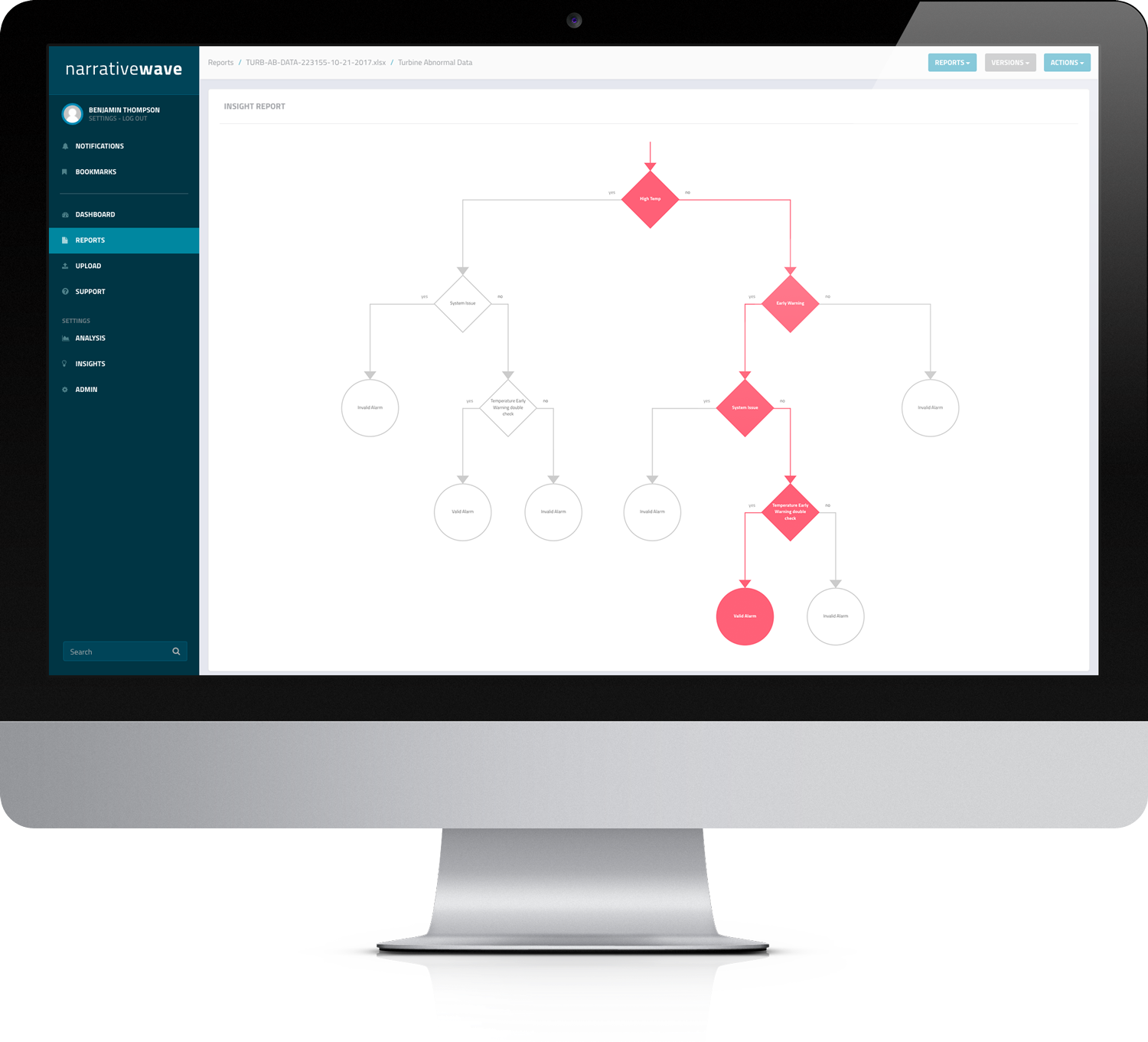
NarrativeWave Insight Trees are flexible and can be created with a visual drag and drop editor, which enables organizations to effectively put their knowledge into action.
#3 Use automated corrective actions
Once you have effectively created Insights, you can create automated corrective actions or recommended next steps. This is achievable due to the automated combination of human knowledge with analytics, and results in significant benefits including:
- Closing the Insight to action gap
- Standardizing responses to analytics which trigger
- Improving engineering and field productivity
At NarrativeWave, the result of an Insight includes either a Recommendation (a simple text recommendation of what to do next), or a full Corrective Action (A database of prioritized actions, which can include documents, comments, notes etc.).
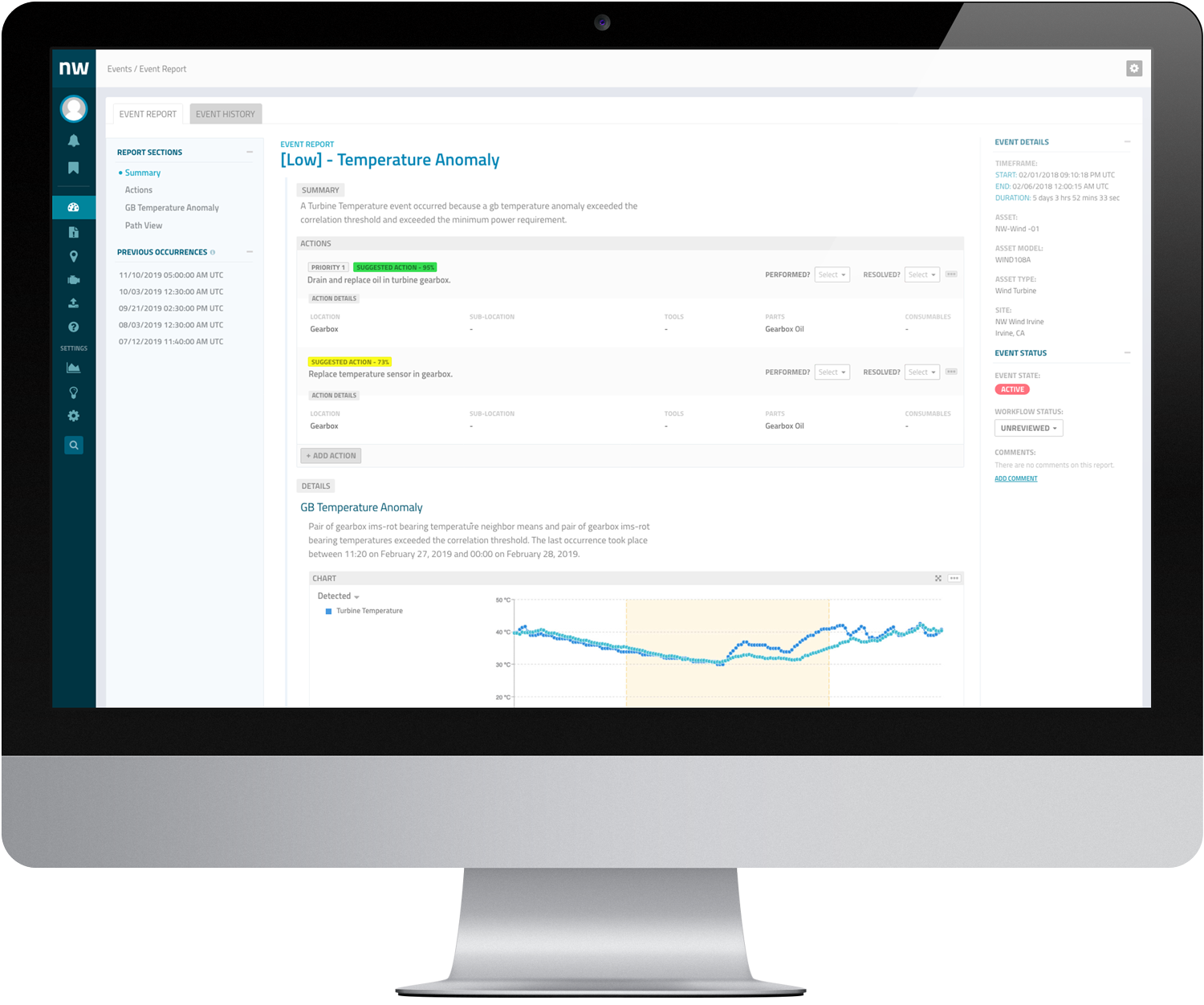
Conclusion
Organizations can dramatically improve productivity and asset performance by using analytics more effectively. This includes using your organization’s knowledge to create tactical outcomes that automate Insights, not alerts, use a high degree of automation, and drive curated corrective actions.